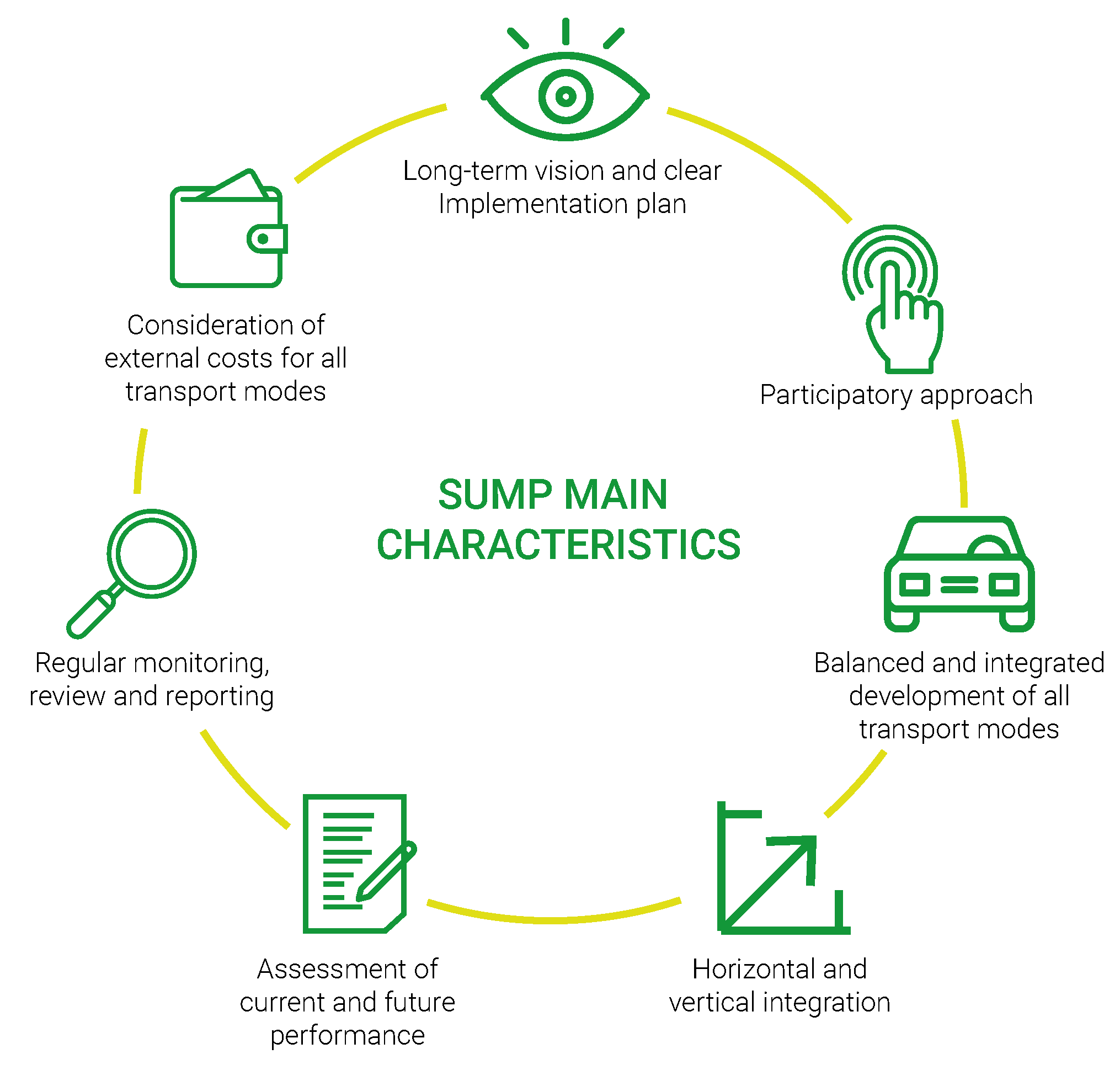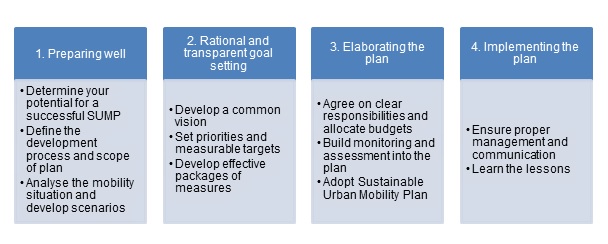Sustainable urbanisation is widely acknowledged as a key global challenge for the 21st century. Congestion, air pollution, safety and noise pollution are examples of commonly shared problems in European cities. Besides the direct impact of traffic, urban transport also affects social development, social exclusion and accessibility for people with reduced mobility.
In order to tackle these challenges within Europe, and ensure competitive and resource efficient urban mobility, the European Commission published its Urban Mobility Package in 2013. Within this package, Sustainable Urban Mobility Plans (SUMPs) appear as central elements for addressing the challenges related to (mainly) urban areas.
What is a Sustainable Urban Mobility Plan?
The SUMP concept is not a rigid definition of what urban planning should be like, or a one-size-fits-all approach to urban mobility planning. It is rather a set of guiding principles that can be adapted to the specific circumstances of the urban area under consideration.
A Sustainable Urban Mobility Plan has as its central goal improving accessibility of urban areas and providing high-quality and sustainable mobility and transport to, through and within the urban area. It regards the needs of the ‘functioning city’ and its hinterland rather than a municipal administrative region.
It aims to build on existing planning practices and ensure integration as well as participation and evaluation principles. People are the main focus of SUMPs; whether it concerns commuters, business people, consumers, customers or any other role, preparing a SUMP means “Planning for People”.
This people-centric approach is one of the main differences from more traditional transport planning, which tend to focus on traffic and infrastructure rather than people and their mobility needs. The main characteristics of a SUMP are:

The benefits of the SUMP approach are diverse. The following list provides the ten principal reasons for drafting and implementing a Sustainable Urban Mobility Plan:
- Improving quality of life
- Saving costs – creating economic benefits
- Contributing to better health and environment
- Making mobility seamless and improving access
- Making more effective use of limited resources
- Winning public support
- Preparing better plans
- Fulfilling legal obligations effectively
- Using synergies, increasing relevance
- Moving towards a new mobility culture
A new planning approach
A SUMP embraces two (2) elements: a process, captured in a planning cycle, and the different tools available in achieving sustainable urban mobility.
The planning process for a SUMP describes the logical rather than sequential steps for a complete and continuously improving planning process. Such a process consists of 4 phases containing in total 11 main steps, which in turn are made up of 32 activities. Together, the steps form a cycle which allows for a continuous improvement process of the mobility planning (see more at: http://www.eltis.org/mobility-plans).
Figure 1 The SUMP process

The urban mobility tools and measures
There are many sustainable urban mobility tools and measures available that cities can consider and implement. There are also two EU supported “flagship” initiatives on sustainable urban mobility (Eltis The urban mobility observatory, and the CIVITAS initiative) which both provide a wealth of knowledge, best practice and tools on sustainable urban mobility.
Eltis The urban mobility observatory
Eltis (www.eltis.org) financed by the EU, facilitates the exchange of information, knowledge and experience in the field of sustainable urban mobility in Europe. It serves professionals working in the area of transport and related disciplines including urban and regional development, health, energy and environmental sciences. Created over 10 years ago, Eltis is now Europe’s main observatory on urban mobility. The dedicated MOBILITY PLANS section serves as an information hub of on how to develop and implement Sustainable Urban Mobility Plans.
CIVITAS Initiative
The CIVITAS initiative (http://www.civitas.eu) was launched in 2002, with the aim of redefining transport measures and policies, in order to create cleaner and better transport in cities. The initiative has tested over 800 innovative sustainable urban mobility measures in over 60 European metropolitan areas.
A short list of different measures available for cities includes:
- Cycling
- Local public transport
- Accessibility
- Marketing
- Car- and bike-sharing
- Integration of transport modes/ intermodality
- Mobility management
- Clean and energy-efficient vehicles
- Urban freight/ city logistics
- Traffic and demand management
- Transport planning and land use
- Access regulation
- Low emission zones
- Parking policies
- Congestion charging
- Limited traffic zones
- European Mobility Week
Presentations and discussions at SUM Bilbao 2019 are expected to cover Sustainable Urban Mobility Plans approach to transport and mobility planning as well as the list of available measures mentioned above. In addition, the event is intended to serve as the perfect place for sharing knowledge and experiences also from non-EU cities. The output will be to build a common understanding of the different tools and measure that are being implemented worldwide and to guide cities in addressing main challenges related to urban mobility.




















